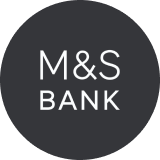If you’re in the market for the best personal loan rates, it’s sometimes difficult to know where to start looking.
There are so many different lenders and interest rates available to you, and all loans come with both advantages and disadvantages.
Our table above compares the best rates accross the market, from highstreet banks to individual loan companies.
But if you still need help figuring out the best loan option for your needs, and how to search for the best rates, the guide below gives an overview on the world of personal loans.
Whether you’re hoping to consolidate your debt, fund a home renovation, or make a major purchase, we’ll show you how to source the best loan rates and choose the right option for you.
What does ‘best personal loan rate’ mean?
When you’re searching for a loan, the “best personal loan rate” is usually the loan offered with the lowest interest. The lower the interest is, the less you’ll end up paying over the life of the loan.
Therefore, finding the best loan rate means finding the lowest interest rate available to you based on your specific circumstances.
Aspects of your credit record like your score, your borrowing history, and your income, all come into the equation when a lender is assessing your suitability for their loan.
For this reason, the best personal loan rate offered to you may be different to that which is offered to another individual.
When searching, it’s useful to use a calculator such as the one on Money Helper. This will allow you to add specific details about your circumstances so you can keep your search for the best loan rates on track.
What is APR?
When looking on loan comparison websites, you may come across the term APR. But what does it mean?
APR stands for Annual Percentage Rate. It’s a common metric which is used to compare loan offers from different lenders you may encounter during your search for the perfect loan.
The APR figure takes a couple of things into account. Not only does it reflect the interest rate on the loan in question, but it also incurs any additional fees and charges that the lender may expect to cover, such as origination fees or closing costs for instance.
By law, lenders are required to publish the APR for their loan offering. This is useful for borrowers so you can easily compare the overall costs of different loan options.
The APR is written as a percentage and represents the total cost of the loan over a year, including both the interest rate and any fees.
To find out the cost of borrowing a loan for a longer period, you can simply calculate based on this handy figure.
When comparing loan offers you find online, it’s vital to take the APR into account, rather than just the interest rate. This is because the APR will give you a much more accurate picture of the total cost you’ll have to cover when paying off your loan.
A lower APR ultimately means that you will pay less in total costs over the life of your loan.
How should I approach looking for the best personal loan rates?
| Figure out how much cash you need | To avoid harming your credit score, calculate the exact amount you need before seeking a loan, instead of taking multiple loans in a short period of time. |
| Check your credit score | Check your credit score before applying for a loan to ensure you get matched rates based on your creditworthiness. Luckily, sites such as Experian and TransUnion let you do this for free. |
| Research lenders and loan rates | Research thoroughly to find the best loan option for your needs. With so many lenders available, each one can help you with your unique situation and offer you the best possible rates, saving you money. |
| Compare the APR of each offer | Compare APRs from different lenders to find the most affordable loan option. Consider the loan length and do your own calculations to determine the duration of the loan repayment before approaching a lender. |
| Read the fine print carefully | Read the loan agreement carefully before agreeing to borrow from a lender. Understanding the terms and conditions of the loan will give you confidence. |
| Apply for a loan | Apply for the loan with the lender of your choice once you have found a suitable option. Provide all the necessary information and documentation to complete your application promptly and get your cash as soon as possible. |
How much can I borrow from a lender?
The amount you will be able to borrow from a lender will depend on a few different factors. Your credit history, income, and debt-to-income ratio all play a part in the lender’s decision.
Usually, lenders outline minimum and maximum loan amounts which they are willing to offer customers. This can range from £500 to £100,000, or even more.
The specific amount which you can borrow will vary depending on the lender, as some have specialist products to suit individual needs, and the type of loan you’re applying for.
This could be a car loan, a personal loan, or a business loan. Every financial situation is different.
People often wonder whether it’s cheaper to borrow more than you need and get a better loan rate as a result?
When it comes to finding an answer to this question, it’s important to consider the overall cost of the loan.
You can do this by considering the APR.
Whilst larger loans might qualify for lower interest rates, it’s vital to remember that you will also end up paying interest on a larger loan amount over a longer period.
As a result, this means that even with a lower interest rate, you may pay more in interest over the life of the loan, leaving you out of pocket.
Of course, your situation is unique. However, in general, it’s always best to borrow a sum which you need and can afford to repay, rather than borrowing more than you need to qualify for a more attractive loan rate.
By ensuring that you borrow only what you need, you can minimise the sum of interest and fees you pay over the duration of the loan and avoid taking on more debt than is absolutely necessary.
Is a loan the cheapest way to borrow?
It might surprise you to know that a loan is not always the cheapest way to borrow money. The total cost of a loan which you take out will hinge on several factors.
The interest rate, fees, and repayment terms all factor in, and your loan might end up costing you more than you anticipated.
For instance, if you need to borrow a small sum of cash for a short period, a credit card or a line of credit may well be a more cost-effective option than a personal loan.
This is because the interest rates for these types of borrowing may be lower than that of personal loans for some individuals. There are no-interest credit cards available, for example.
If you can qualify for one of these financial products, you could borrow a few hundred pounds and pay nothing in interest or fees if you ensure that you keep up with repayments.
In addition, if you have built up equity in your home, a home equity loan, or a home equity line of credit: ‘HELOC’, might be able to offer you lower interest rates than a personal loan, as the loan itself is secured by the equity in your home.
Lenders will therefore regard loaning you cash as a low-risk prospect, as your home is collateral.
Before jumping into a loan agreement, it’s always a good idea to compare the total cost of borrowing across different types of loans and credit options before making a decision about which one is right for you.
By shopping around and comparing interest rates, fees, and repayment terms, you can find the most affordable option for your specific borrowing needs.
What could impact loan rates I get offered?
Many different factors can impact the loan rates that you might be offered by lenders. One of the most important factors is your credit score.
Typically, lenders view people with higher credit scores as a less risky borrowing prospect. For this reason, these individuals are offered lower, better interest rates.
On the other hand, people with lower credit scores may be viewed as riskier borrowers, and will likely be offered higher interest rates, or may not even qualify for certain loan products available on the market.
To get better rates, you can take action to improve your credit score such as paying bills on time, registering to vote, and exercising restraint when applying for credit products.
Another key factor which impacts loan rates is the loan amount you are seeking to borrow from a lender.
Lower interest rates are sometimes offered for larger loan amounts, as larger loans tend to represent a greater potential for return on the lenders’ cash.
However, as we mentioned earlier, it’s important to consider the APR, as borrowing more than you need can ultimately result in higher interest charges and fees over the life of the loan.
Other factors that can impact your capacity to secure the best loan rates include details of your income, your debt-to-income ratio, your employment history, and the type of loan you’re applying for.



